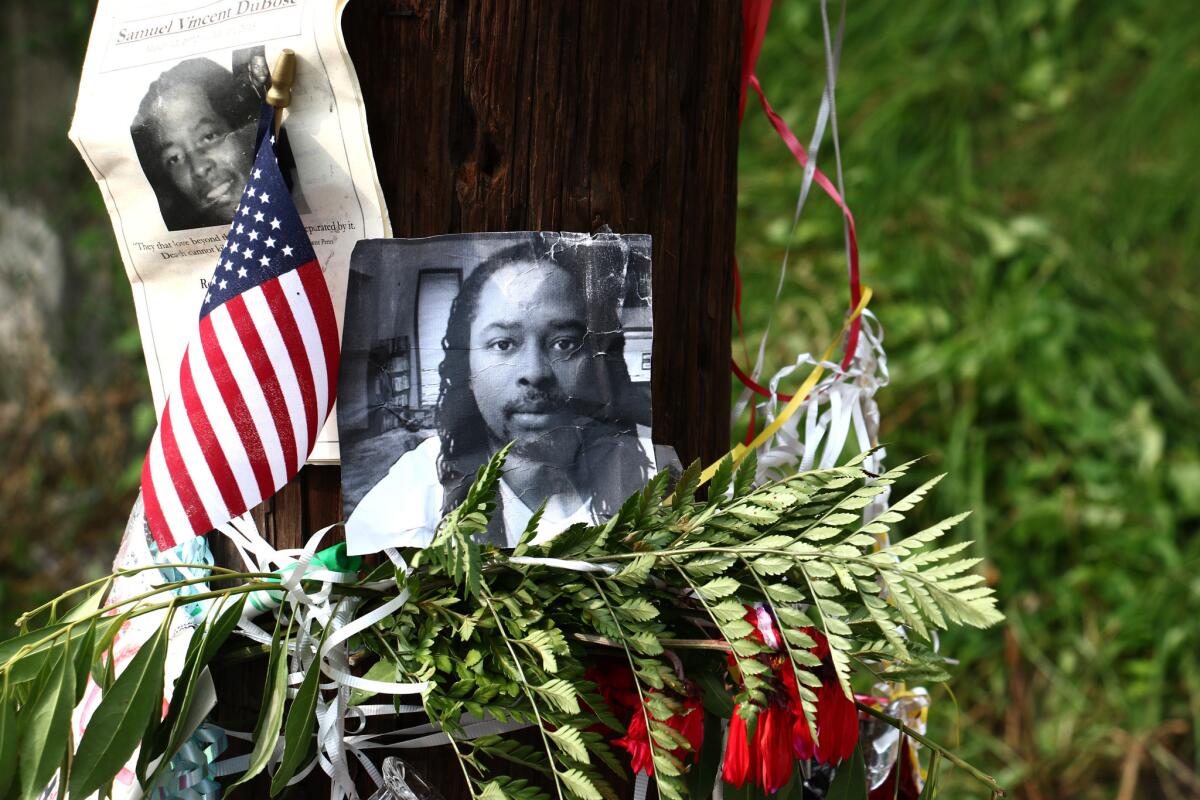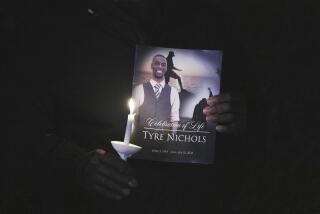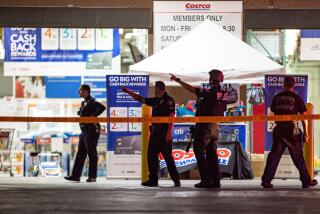2 backup officers at Samuel DuBose shooting scene won’t be charged

Photos of Samuel DuBose hang on a pole at a roadside memorial in Cincinnati, near where he was shot and killed by a University of Cincinnati police officer.
Two University of Cincinnati police officers who arrived on the scene seconds after a white colleague fatally shot an unarmed black man will not face charges of lying about what they saw, prosecutors said Friday.
Hamilton County Prosecutor Joseph T. Deters said the two officers, who are on paid administrative leave from their university jobs, were “truthful and honest” about what they saw during formal interviews with authorities after the July 19 shooting of Samuel DuBose during a traffic stop.
The announcement came as a video surfaced showing the shooter, Officer Raymond Tensing, repeatedly insisting he had fired in self-defense. Another video emerged Friday on YouTube, showing Tensing in a verbal confrontation with a passenger and a driver during an otherwise routine 2014 traffic stop.
Tensing pleaded not guilty Thursday after a grand jury indicted him on one count of murder and one count of voluntary manslaughter.
The same grand jury cleared his colleagues, whose body cameras captured the confusion after the shooting, as DuBose lay dead in the driver’s seat and officers began flooding the scene, asking one another what had happened.
“I thought he was gonna run me over,” Tensing said more than once. He also described getting “tangled in the car,” which he had pulled over for not having a front license plate. The driver “was dragging me,” Tensing said at one point. “I just got my hand and my arm stuck inside.”
Each officer, at various times, said they had witnessed the encounter, and they backed up Tensing’s statements to other police arriving at the scene.
But in announcing that the two officers would not face charges, Deters said there was “confusion” in an initial incident report that implied they saw Tensing being dragged.
“That was not a sworn statement by the officers and merely a short summary of information,” Deters said of the initial report. “When the officers were specifically asked about what they saw and heard, their statements matched Tensing’s body camera video.”
Deters said the video shows that he was not dragged and that he fired without cause, hitting DuBose once in the head.
At Tensing’s arraignment Thursday, DuBose family members called for officers who backed Tensing’s version of what happened to be fired and face charges.
Responding to the grand jury’s decision Friday, the family attorney, Mark O’Mara, said, “While we are still concerned with the initial rendition of facts given by the officers who witnessed the shooting of Sam DuBose, we are grateful that the grand jury conducted a serious review, and we respect the decision they reached.”
Tensing was released from jail Thursday night after posting 10% of $1-million bond.
The second video that appeared Friday brought complaints from another black driver, who raised questions about Tensing’s professionalism. Sexton Henley, 27, of Cincinnati, said Tensing escalated a routine traffic stop by demanding identification from a passenger and opening a passenger’s door.
Henley said he was stopped by University of Cincinnati police around 2 a.m. on May 5, 2014, for having a damaged bumper that was hanging too low.
After Henley provided identification to a different officer, he said, Tensing, who was standing by the passenger door, asked for identification from Henley’s passenger.
After the passenger refused to provide anything except his first name, Henley said, Tensing spooked the men by opening the door, which is when the passenger started recording the incident.
The video, uploaded to YouTube last year, shows Tensing repeatedly asking for the passenger’s identification and for him to get out of the car, at one point hinting he would be arrested
for refusing to identify himself.
He refuses to identify himself or get out, saying he has done nothing wrong, and instead he and Henley ask for Tensing’s supervisor.
The supervisor arrives at the scene and says police generally want to make sure a car hasn’t been involved in an accident.
Tensing tells the supervisor the passenger was the one who opened the door, which the men deny.
After a few minutes, the supervisor says Henley will get a citation for the bumper but the men were otherwise free to go.
“I feel like they were abusing their power, trying to strong-arm us, trying to use a scare tactic,” Henley said in an interview Friday, adding that the traffic stop was different from other times he’d been pulled over. “If we didn’t have a camera, who knows how this scenario would have played out.”
The University of Cincinnati and its Police Department did not immediately respond to requests for comment Friday afternoon.
In Ohio, state law says a person in a public place can’t refuse to provide identification to an officer who “reasonably suspects” that person of committing a crime or witnessing a felony.
Cincinnati defense attorney Mike Allen said he didn’t know whether it was illegal for the passenger to refuse to identify himself, though he added, “From a common-sense standpoint, it would be easier on them if they did.”
tina.susman@latimes.com
Twitter: @tinasusman
matt.pearce@latimes.com
Twitter: @MattDPearce
More to Read
Start your day right
Sign up for Essential California for news, features and recommendations from the L.A. Times and beyond in your inbox six days a week.
You may occasionally receive promotional content from the Los Angeles Times.








